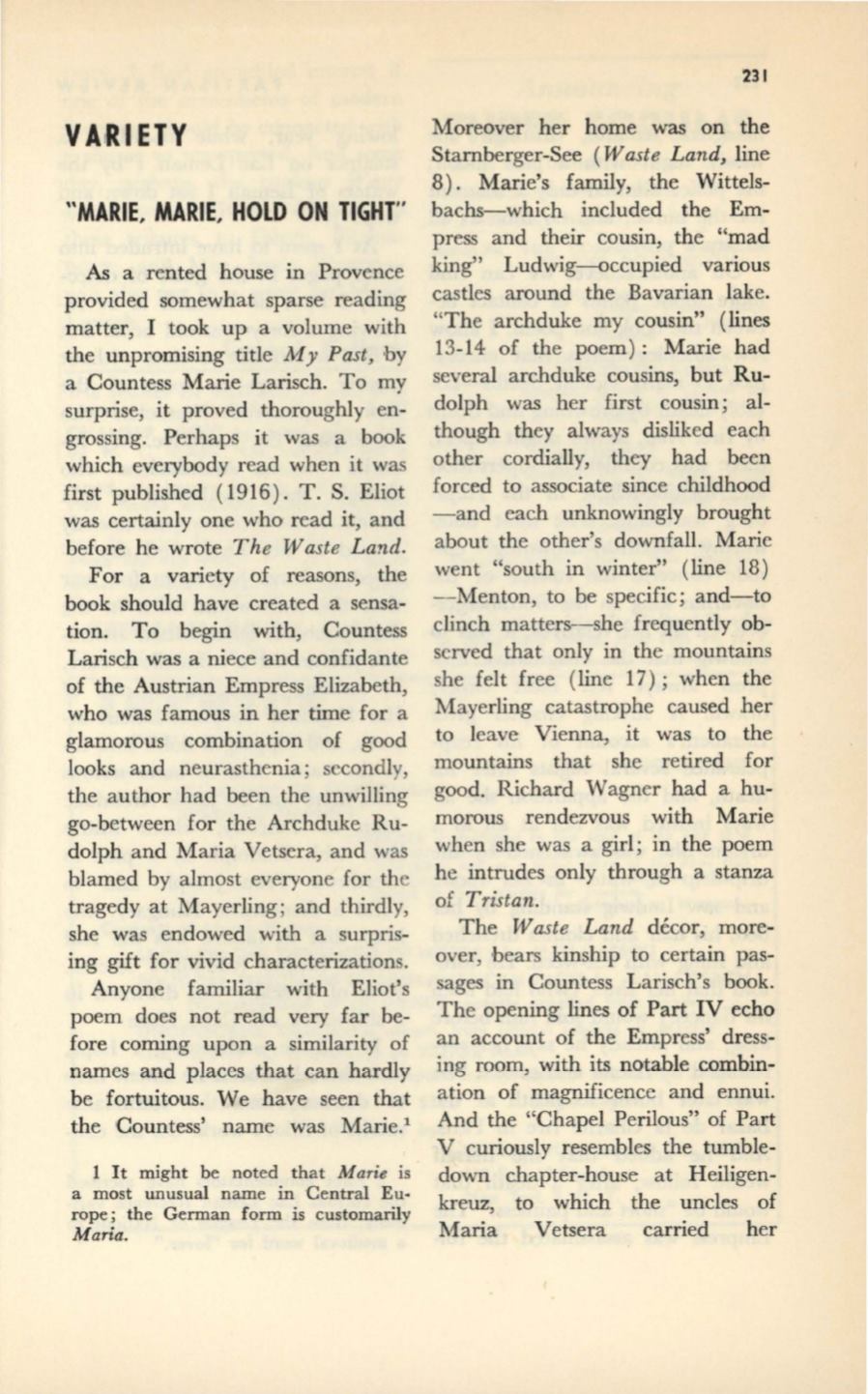
VARIETY
"MARIE, MARIE, HOLD ON TIGHT"
As
a rented house in Provence
provided somewhat sparse reading
matter, I took up a volume with
the unpromising title
My
Past,
by
a Countess Marie Larisch. To my
surprise, it proved thoroughly en–
grossing. Perhaps it was a book
which everybody read when it was
first published
(1916).
T. S. Eliot
was certainly one who read it, and
before he wrote
The Waste Land.
For a variety of reasons, the
book should have created a sensa–
tion. To begin with, Countess
Larisch was a niece and confidante
of the Austrian Empress Elizabeth,
who was famous in her time for a
glamorous combination of good
looks and neurasthenia; secondly,
the author had been the unwilling
go-between for the Archduke Ru–
dolph and Maria Vetsera, and was
blamed by almost everyone for the
tragedy at Mayerling; and thirdly,
she was endowed with a surpris–
ing gift for vivid characterizations.
Anyone familiar with Eliot's
poem does not read very far be–
fore coming upon a similarity of
names and places that can hardly
be fortuitous. We have seen that
the Countess' name was Marie.
1
It might be noted that
Marie
is
a most unusual name in Central Eu–
rope; the German form is customarily
Maria.
231
Moreover her home was on the
Starnberger-See
(Waste Land,
line
8) . Marie's family, the Wittels–
bachs-which included the Em–
press and their cousin, the "mad
king" Ludwig--occupied various
castles around the Bavarian lake.
"The archduke my cousin" (lines
13-14
of the poem): Marie had
several archduke cousins, but Ru–
dolph was her first cousin; al–
though they always disliked each
other cordially, they had been
forced to associate since childhood
-and each unknowingly brought
about the other's downfall. Marie
went "south in winter" (line
18)
- Menton, to be specific; and-to
clinch matters--she frequently ob–
served that only in the mountains
she felt free (line
17);
when the
Mayerling catastrophe caused her
to leave Vienna, it was to the
mountains that she retired for
good. Richard Wagner had a hu–
morous rendezvous with Marie
when she was a girl; in the poem
he intrudes only through a stanza
of
Tristan.
The
Waste Land
decor, more–
over, bears kinship to certain pas–
sages in Countess Lariseh's book.
The opening lines of Part IV echo
an account of the Empress' dress–
ing room, with its notable combin–
ation of magnificence and ennui.
And the "Chapel Perilous" of Part
V curiously resembles the tumble–
down chapter-house at Heiligen–
kreuz, to which the uncles of
Maria
Vetsera
carried
her


